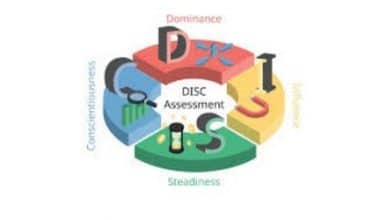Running payroll is a requirement for every business. And, while it may not be the most glamorous job, it is a necessary one. Keeping track of your company’s payroll ensures that everyone on your team is paid on time. However, the payroll process can be tedious, time-consuming, and repetitive. When you have a large number of employees, the payroll process can become complicated. You can run payroll quickly and efficiently with the help of a payroll system. You can focus on other, more pressing business needs by spending less time and effort on the payroll. In this article, we’ll explain what payroll system management is, how payroll is done, and how a payroll process can benefit your business. Continue reading to learn more about the various types of automated payroll system software for a small business.
What is a Payroll System?
A payroll system is any method of paying employees, depositing payroll taxes, and keeping track of transactions. These tasks can be completed manually or automated with software to save time and reduce the risk of error.
Payroll System Management
Simply put, a payroll management system is a process by which employers pay their employees’ wages. It’s also how they demonstrate their commitment to their workers, fulfill their obligations to government agencies, and keep financial records in order.
Why is Payroll System Management Important?
Payroll system management is an important part of any business because it helps improve employee engagement and regulatory compliance. Employers may face wage claims and costly penalties if they do not have an efficient and accurate method of paying employees, depositing and filing taxes, and maintaining records.
What are the Phases of the Payroll System Management Process?
Regardless of how employers choose to manage payroll, the process typically consists of three stages:
#1. Pre-payroll
Employers collect relevant data for the pay period based on defined company policies and regulatory requirements, such as non-exempt employee hours worked, exception time (vacation, sick, jury duty, etc.), and employee adjustments, such as new hires, separations, salary increases, or changes to benefit deductions and tax withholdings. This data is then validated and used to process payroll.
#2. Calculations
Employers calculate net pay by taking the total gross pay earned by each employee during the pay period and deducting taxes and deductions. They also accrue their tax liability for the same period.
#3. Post-payroll
Payroll is reconciled, taxes are paid by the due date, and any related payments, such as wage withholding orders, are processed. They also pay their employees and provide them with a pay stub or wage statement, which is required in most jurisdictions.
What are some Methods of Payroll System Management?
Employers have several payroll management options depending on their budget and desired level of involvement, including:
#1. Manual payroll management using spreadsheets
Employers with a few employees may prefer to manage payroll manually, using spreadsheets. However, the potential cost savings are usually outweighed by the drawbacks. Manual DIY processes increase the likelihood of costly errors and divert time away from activities that promote business growth.
#2. Payroll management software
By automating time-consuming tasks, high-quality payroll software reduces administrative workloads. Employers can rely on it to accurately calculate gross wages, deductions, and net pay while retaining some control over the process.
#3. Outsourcing
Employers who want to completely offload payroll often hire an administrative services payroll provider or enter into a co-employment agreement with a professional employer organization (PEO). In such cases, the provider or PEO may handle all aspects of payroll administration, including tax deposits, reporting, and compliance.
Types of Payroll Management Software
Payroll system management software may be categorized by a few main classifications; cloud vs. enterprise, general vs. industry-specific, as well as according to business size. However, there is another way to categorize payroll management systems—one that focuses on the platform’s fundamentals and the impact it may have on company workflows.
#1. Dedicated payroll management software
Dedicated payroll management software solutions are often referred to as standalone systems. They go above and beyond to deliver robust features and capabilities that address the core processes involved in payroll and other HR management functions.
The majority of dedicated payroll management systems include specialized functions that benefit HR teams and departments. These features include time tracking and employee attendance, customized reporting, and tax and benefit management.
#2. Integrated payroll management solution
Integrated payroll management solutions are frequently included in other HR management platforms with extensive features and capabilities covering a wide range of functions.
Accounting, human resources management, and payroll are key business processes that typically overlap. As a result, services and software products that cater to such processes frequently give customers the option to integrate a variety of modules designed to meet the specific requirements of each organization.
#3. Payroll System Software
Payroll system management software is a comprehensive and feature-rich tool that is designed to facilitate payroll and other important HR management processes, from organizing pertinent HR data to automating the crucial day-to-day processes involved in the calculation and payment of staff/employee salaries.
What are the Benefits of Using Payroll System Software?
Payroll system software facilitates any business or organization through process automation, data centralization and security, workflow efficiency, HR productivity, cost savings, customization, and integration.
Businesses that use the right payroll solution can save time and money while also avoiding human error. The system ensures that the correct amount is paid to the correct employee, that organizations pay their taxes correctly, and that sensitive company and employee data is protected.
Payroll management software solutions also help to increase transparency within the organization by providing easy access to agreements, employee benefits, timesheets, and other similar data, allowing for the quick resolution of disputes. Furthermore, with such a diverse set of features and tools at their disposal, users will be able to customize reports for stakeholders and authorized personnel.
How to Choose Payroll System Software
A few key considerations must be made before implementing a payroll system software solution. These platforms come in many different packages, such that some are available as an extra feature in ERP, HRM, and accounting systems while others are available as an independent standalone solution, as previously mentioned.
Before committing to a specific service, vendor, or subscription plan, consider the following factors to ensure you get the best value for your money:
#1. Cost of Ownership
Organizations (regardless of size or industry) must constantly balance operational costs, cost of ownership, and other company expenses. You can spend money to make money, but you can’t spend so much that your bottom line suffers.
When it comes to payroll management software (or any other software solutions for that matter) there are a few options available for getting them: a one-time licensing fee or a monthly, quarterly, annual, or bi-annual subscription. Not all vendors offer such options, but when you look around for software pricing, these are the payment options that you will typically find.
#2. Cloud-based service or on-premise deployment
How it will be used in your small business is another thing to think about when purchasing payroll system software. While others are offered as a cloud-based service, some software systems are installed on-premises. There are pros and cons to these two different deployment methods.
#3. The main features the product offers
You must also consider the key features of the software solution and whether or not your company requires them. Some payroll management systems provide a plethora of features and tools, but this does not always imply that they are the best option for your company. Just because a product has a lot of features doesn’t mean you’ll use them all.
#4. Integration and scalability
Scalability is critical, especially for a growing company. As your company grows and your workforce grows, you must be able to rely on the software solution to help with payroll management. The payroll management system you pick should be able to stand the test of time as well as keep up with the growth pace of your organization.
Payroll System Small Business
Working with payroll software is a simple process that will save you time and effort in managing your payroll calendar, even if you are not a tech-savvy business owner. Your small business’s payroll system software needs to be configured first. While this is usually a simple process, many payroll providers offer assistance or even set up your account for you.
While setting up your account, you or a customer support representative will supply the software with banking information for both your business and employees. The information provided will allow the payroll software to directly deposit wages into your staff’s bank accounts, calculate your payroll taxes, and keep track of employees’ wages, PTO, personal records, and more. Then, you’ll create your payroll calendar, deciding which days of the week and how frequently your employees will be paid.
Your payroll software can be integrated with accounting, time and attendance, and HR software provided by your payroll provider or a third-party provider once your payroll calendar is set up. Integrations simplify the payroll process by synchronizing your payroll with your employees’ working hours. This simplifies the process of automating your payroll calendar. However, you will still want to check over everything even if you decide to automate your payroll.
With your account set up, you’ll be able to process payroll quickly while on the go. Many payroll providers have mobile apps or mobile-friendly websites. And, at this point, it only takes a few quick clicks on your cell phone to run your payroll.
Automated Payroll System
Simply put, employers pay their employees using a payroll system. Similarly, an automated payroll system enables an employer to process payroll online.
Common Automated Payroll System Features
Most payroll providers have a plethora of automated capabilities, but here are six common and critical features to look for.
- Payroll Processing
- Payroll Administration
- Electronic Funds Transfer
- Tax Management
- Reporting
- Record Keeping
Top 3 Automated Payroll System
Choosing an automated payroll system provider that suits your needs can be a challenge, so here are our top three recommendations.
#1. Gusto
Gusto is a low-cost option that also provides a large-scale package. The extensive range of HR tools and features offered by this payroll service is one of its most notable features.
#2. ADP
Automatic Data Processing, or ADP, is a leading payroll processor. The name is probably the most familiar to you on this list, and for good reason: they are a big name in the business software world. ADP provides a simple dashboard and a variety of plans for businesses of all sizes.
#3. Paychex
Paychex provides three plans with a variety of add-on services that allow businesses to easily scale and customize the plan to their needs. They can also be thought of as the most adaptable automated payroll system for businesses.
What is an example of a payroll system?
Examples of payroll systems include Sumopayroll, sumHR, Keka, PeopleWorks, and Accent HRP.
What are 2 different types of payroll systems?
The three main types of payroll are manual, software, and outsourcing.
What is an HR and payroll system?
HR (human resources) and payroll are two departments within a business. Payroll is a list of employees and the amount of money they are paid, while HR handles a variety of tasks related to managing employees and administration, such as hiring, firing, benefits, attendance, and more.
Read Also: WHAT ARE COLLECTIONS? Agency, Debt & How to Pay It Off
What is the most common payroll software?
The best payroll software systems:
- QuickBooks Payroll.
- Paychex.
- Gusto.
- Paycor.
- Rippling.
- OnPay.
- Trolley.
- Xero.
What are the four types of payroll?
The four types of payroll are as follows:
- Internally Managed Payroll Systems
- Professionally Managed Payroll Systems
- Payroll Services Managed by Payroll System Agencies
- Software Managed Payroll Systems
Is SAP a payroll system?
Yes, SAP HR software includes payroll management, administration, and processing through SAP SuccessFactors Employee Central Payroll. Other enterprise and human resources processes can be integrated with the cloud solution.
Conclusion
Choosing the best payroll software for your company is an important decision. Fortunately, multiple online payroll software solutions offer robust features, integrations, and user interfaces to suit business owners without much payroll processing experience.
Related Articles
- Small Business Payroll: Best Payroll Software UK Service
- HR SERVICES FOR SMALL BUSINESSES: Functions & Examples of HR Services
- 17 BEST SMALL BUSINESS PAYROLL SYSTEMS 2023, Updated!!!
- COST OF PAYROLL SERVICES AND TAXES
- BEST PAYROLL SOFTWARE FOR SMALL BUSINESS 2023






